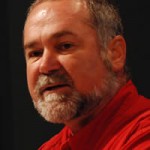
Does Your Brand Have a Plot?
I overheard this intriguing question whilst at SXSW 2012 earlier this year. The question came to mind again recently while watching Simon Sinek's excellent TEDx talk on “How Great Leaders Inspire Action.” All too often, most companies seek to inspire customers (to purchase their product or service) by explaining “What they do” rather than “Why they do” what they do. This approach, as it turns out, is exactly the wrong way to catalyze inspiration. Sinek demonstrates how starting with why makes all the difference when seeking to inspire others.
Take Apple as an example:
“If Apple were like everyone else, a marketing message from them might sound like this: we make great computers; they are beautifully designed, simple to use and user-friendly. Want to buy one? … And that's how most of us communicate, that's how most marketing is done, that's how most sales is done […]. We say what we do, we say how we're different or how we're better, and we expect some sort of behavior, a purchase or vote […]. But it's uninspiring. Here's how Apple actually communicates. Everything we do, we believe in changing the status quo, we believe in thinking differently. The way we challenge the status quo is by making our products beautifully designed, simple to use, and user-friendly. We just happen to make great computers. Want to buy one?”
Sinek's main take away message from this example (and indeed his entire talk) is that people don't buy what you do, they buy why you do it. This explains the importance of starting with why: your purpose, your cause, your belief. ”
The goal is not to do business with everybody who needs what you have; the goal is to do business with people who believe what you believe.” If you talk about what you believe, you will attract those who believe what you believe. These are you early adopters who have the potential to change the world. Again, “what you do simply proves what you believe.”
Why you believe what you believe is ultimately a story, a narrative. So what is your story? What is your plot? The answer to these questions is what will inspire others to join you in your cause. “If you want to build a ship,” wrote Antoine de St. Exupery, then “don't drum up the men to gather wood, divide the work and give orders. Instead, teach them to yearn for the vast and endless sea.” Why you yearn for that open horizon is your story. Dr. Martin Luther King didn't give the “I have a plan” speech on the steps of the Lincoln Memorial on that hot summer day in August 1963, he gave the “I have a dream” speech.

ROBERT STEELE: Open Source Intelligence (OSINT) and M4IS2 (Multinational, Multiagency, Multidisciplinary, Multidomain Information-Sharing and Sense-Making) have always been about creating a Smart Nation and creating a prosperous world at peace, a world that works for 100% of humanity. Sadly, OSINT has been corruptly implemented by most governments, especially the US Government, and corporations. It has been treated as an “input” and revenue stream rather than as a fulcrum or lever for moving the world. The WHY of Phi Beta Iota the Public Intelligence Blog and everything I do is quite clear but bears repeating in the context of this excellent summary from Dr. Patrick Meier: it's about restoring the intelligence and integrity of not just government, but all eight information-heavy elements of humanity: academic, civil society, commerce, law enforcement, media, military, and non-government / non-profit. It is about eliminating fraud, waste, and abuse; about eliminating corruption, all through the application of transparency, the reverence for truth, and the creation of trust. It's about making Whole of Government management possible with unclassified decision suppport that can be of, by, and for the public, not just a hoarded source for the mandarins. It's about finding convergence among a disparity of stakeholders, focusing on common understandings across the 80% instead of conflict across the 20%.



